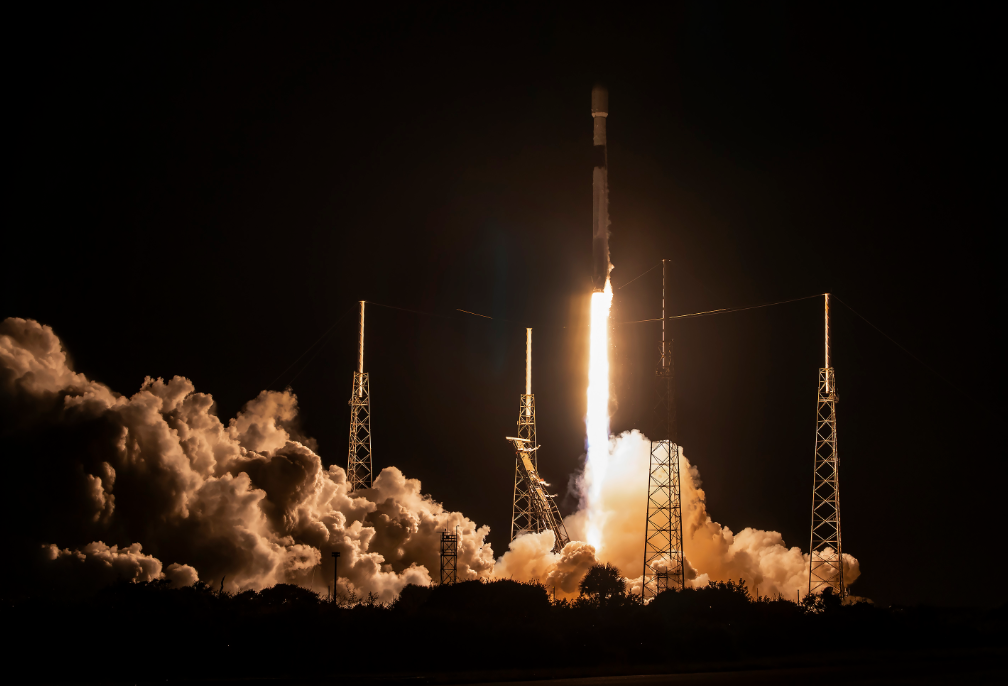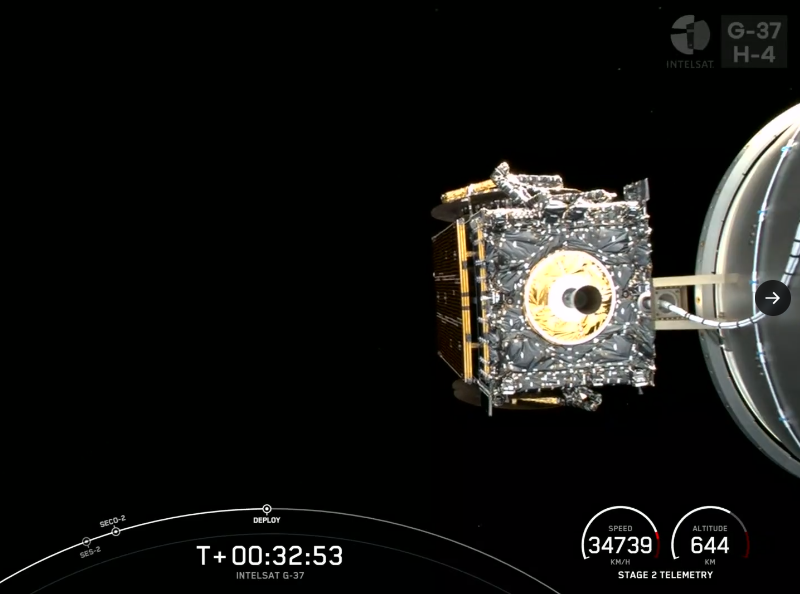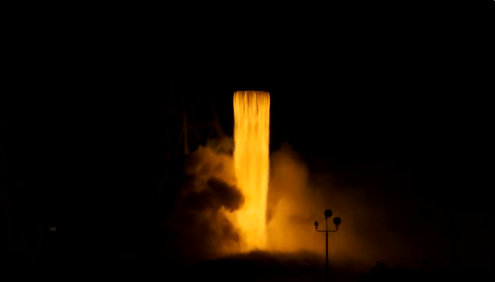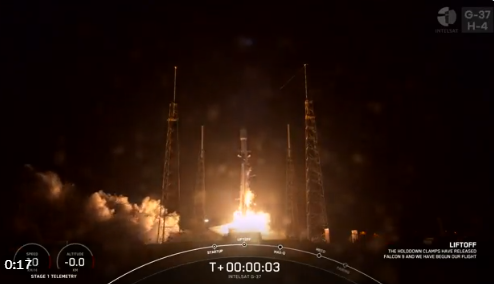On Thursday, SpaceX successfully launched an Intelsat communications satellite as part of a fleet-wide refresh mandated by the Federal Communications Commission (FCC) to create space for 5G cellular networks. The Falcon 9 rocket took off from the Cape Canaveral Space Force Station at 1 a.m. EDT, propelling the satellite with 1.7 million pounds of thrust.
The first stage, on its sixth flight, propelled the vehicle out of the dense lower atmosphere and landed on a droneship downrange. Meanwhile, the second stage continued its journey to space, firing its engine twice to reach the planned elliptical deploy orbit.
After approximately 32 minutes from liftoff, Intelsat’s Galaxy 37 spacecraft was successfully released to fly on its own. The 5-ton relay station is expected to be placed in a circular orbit 22,300 miles above the equator at 127 degrees west longitude. From this position, it will provide C-band broadcast service across North America. Additionally, the satellite will host a Ku-band payload jointly owned by Intelsat and JSAT International, a subsidiary of SKY Perfect JSAT Corp.
The launch is part of Intelsat’s comprehensive refresh of its Galaxy satellite fleet, which offers C-band television relay services in North America and the eastern Pacific. This move is in line with the FCC’s efforts to free up frequencies for the deployment of 5G cellular networks.
Bruno Fromont, Intelsat’s chief technology officer, highlighted the significance of this milestone, as it marks the conclusion of launching eight satellites within a span of 10 months. The engineering team’s accomplishment in completing this massive sprint is unprecedented in the industry’s history. This achievement represents a successful collaboration between SpaceX and Intelsat, advancing the future of communication technology.








